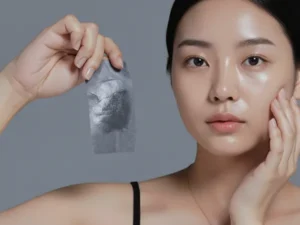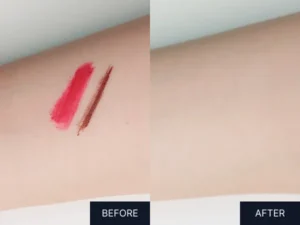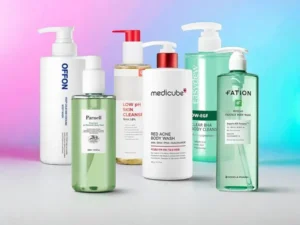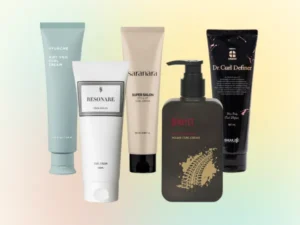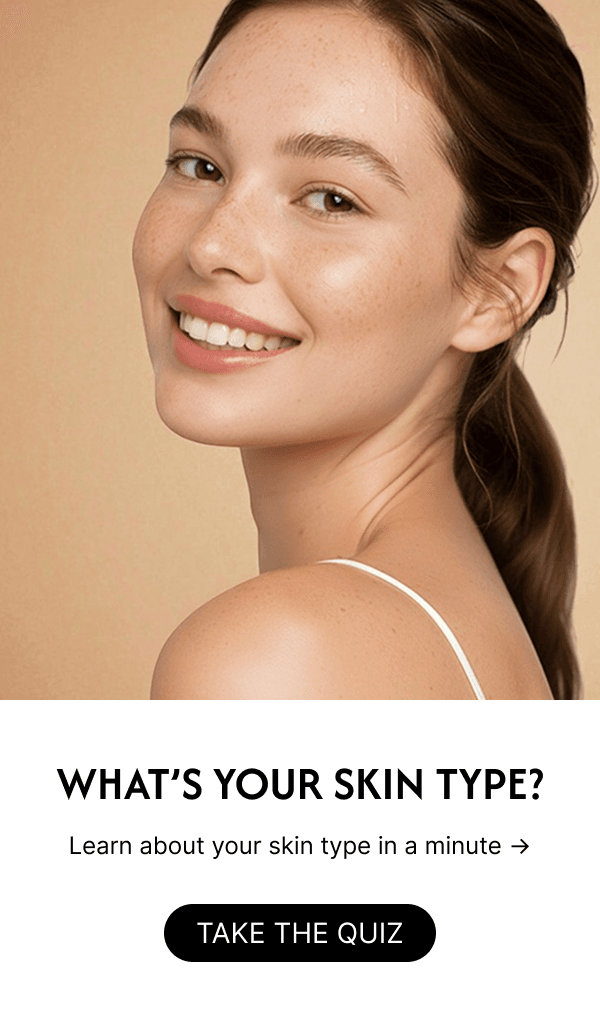Did you know that most people don’t have just one skin type? It’s actually quite common to deal with both oily and dry areas on the same face, a condition known as combination skin. Korean skincare for combination skin is particularly helpful because of its wide variety of products that address multiple concerns at once. Many are specifically designed to provide balanced hydration for both dry and oily areas while calming inflammation and strengthening the skin barrier.
While combination skin can feel tricky to manage, it has the potential to become one of the healthiest skin types when you get the balance right. The real problem is that most people stick to a single skincare routine, which often backfires by amplifying the worst of both worlds: excess oil where you don’t want it and uncomfortable dryness everywhere else.
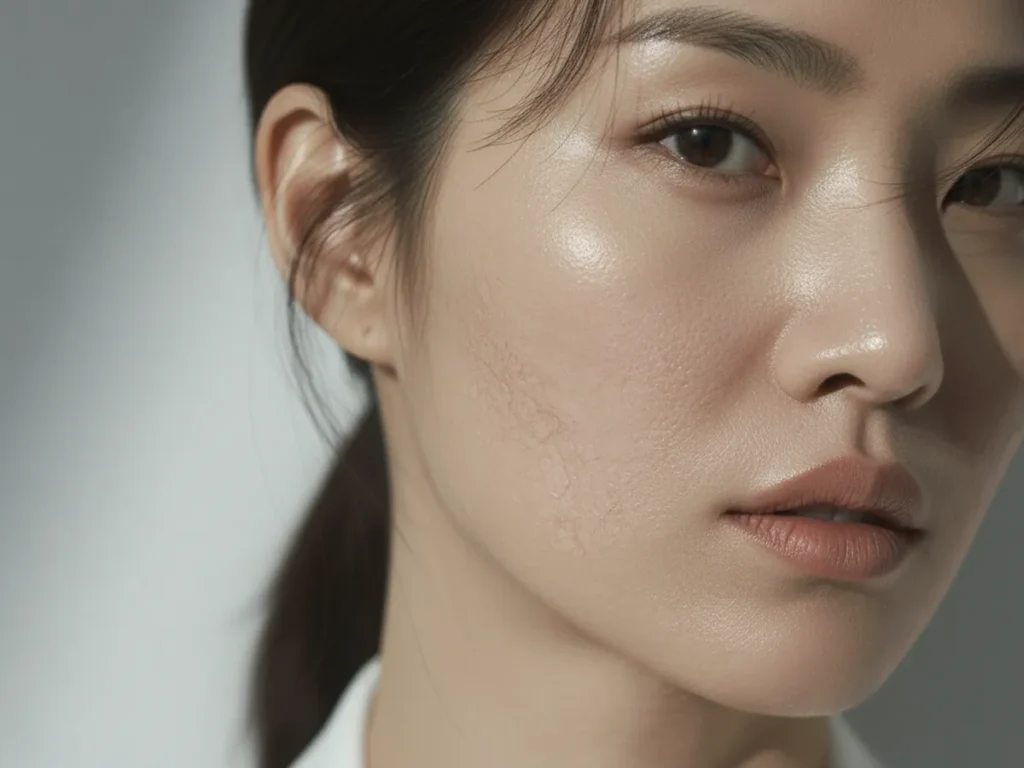
How to Tell if You Have Combination Skin
Combination skin has one defining characteristic: it displays different skin types across various areas of your face at the same time. The T-zone, which includes your forehead, nose, and chin, tends to be oily and may even feel greasy by midday. Meanwhile, your cheeks often feel dry, tight, or sensitive, sometimes showing flaky patches or redness.
The biggest challenge with combination skin is managing its inconsistency. To keep everything balanced, each zone should be cared for based on its own needs instead of applying the same products and techniques everywhere. Understanding these differences is the first step towards managing combination skin.
PROS
- The balanced mix of oil and moisture helps keep skin naturally hydrated and firm
- Makeup applies smoothly with minimal patchiness or excessive shine
- Building an effective routine is straightforward once you understand your skin’s needs
CONS
- Different areas require different care, which can feel time-consuming
- Excess sebum in the T-zone often leads to breakouts and enlarged pores
- Finding one product that works for your entire face can be challenging
The greater the difference between your oily and dry zones, the more attention your routine requires. However, when properly balanced, combination skin can look naturally healthy, even-toned, and radiant without much effort.
How to Care for Combination Skin
The key to caring for combination skin is treating each zone according to what it actually needs. Instead of applying the same product from forehead to chin, think of your face as having different neighborhoods that thrive under different conditions. If your skin leans more heavily toward the oily side, you might want to check out how to manage dehydrated oily skin.
For example, use a lightweight cream or serum that helps control sebum on the T-zone, and apply a richer, more moisturizing cream on the cheeks. Products that address both oil control and hydration are ideal for this skin type.
Multi-masking is another effective technique for combination skin, though it’s not strictly necessary for everyone. This approach involves using clay or charcoal masks on your T-zone to absorb excess oil, while applying hydrating sheet masks or cream masks to your cheeks at the same time. It’s a unique tip often favored by those who see skincare as a major part of their self-care routine and enjoy going the extra mile. However, if you’re looking for a good balance with the rest of your life, multi-masking can feel like too much work. A simpler, zone-by-zone moisturizing routine is usually enough to keep combination skin healthy and comfortable.
Morning Korean Skincare for Combination Skin
A good morning skincare routine is the foundation for every skin type, and it usually comes down to three steps: cleansing, moisturizing, and sun protection. For combination skin, the key is understanding how oily your T-zone gets and how dry your cheeks feel. That awareness shapes how you care for each area throughout the day.
Step 1: Cleanse
When cleansing in the morning, focus your foam cleanser on the oilier parts of your face, like the T-zone, and stick to water-only cleansing for drier areas. Use a mild, low-pH cleanser to remove excess oil that builds up overnight without stripping your skin’s natural barrier. If your dry areas also feel greasy some mornings, go for a full-face cleanse but spend extra time on the T-zone. About 30 seconds there, then another 30 seconds for the rest of your face should do the trick.
Recommended Morning Cleansers for Combination Skin
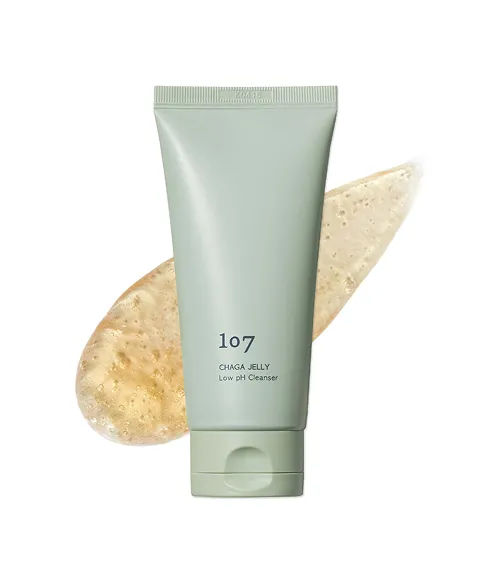
Low-pH jelly cleanser perfect for gentle morning cleansing. Too mild for evening use, but ideal for starting your day hydrated and refreshed without stripping skin.
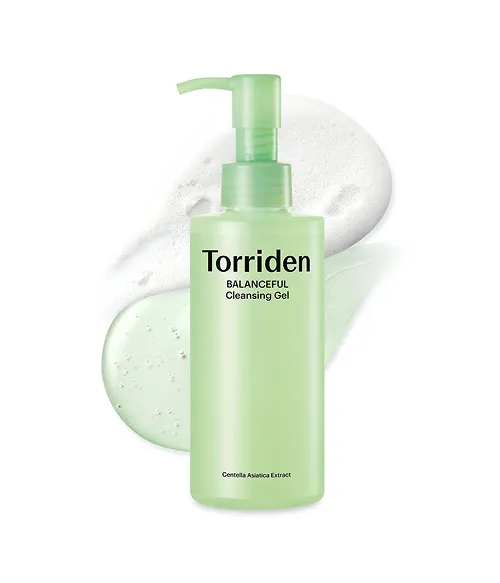
Mildly acidic vegan cleanser with cica and LHA for sensitive combination skin. Perfect for morning use and as a second cleanser in double cleansing.
Step 2: Hydrate and Moisturize
Moisturizing combination skin means balancing both dry and oily zones without overloading either. Start with an alcohol-free toner to remove any residue, balance your skin’s pH, and prep it for better absorption. If your skin isn’t sensitive, soak a cotton pad with toner and gently wipe your T-zone to refine texture and remove lingering oil. On particularly dry days, you can also leave soaked pads on your cheeks for five minutes as a quick hydrating boost.
Next, apply a hydrating serum with ingredients like hyaluronic acid, vitamin C, or niacinamide. These help regulate oil production while adding moisture where you need it. Follow with a gel-cream that provides hydration without heaviness, focusing on your cheeks and other dry areas.
Here’s how to adjust your routine by season:
- Summer: Hyaluronic toner + serum + gel cream on dry areas
- Spring/Fall: Hyaluronic toner + serum + soothing gel cream + oilier cream on dry areas
- Winter: Hyaluronic toner + serum + oilier cream + heavier cream only on dry areas
Recommended Korean Moisturizers for Combination Skin
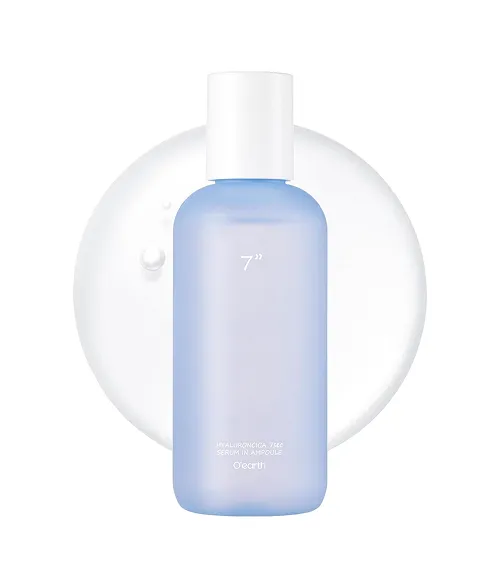
Hyaluronic acid serum with cica actives delivers deep hydration for both oily and dry areas. Non-comedogenic, slightly viscous formula balances combination skin.
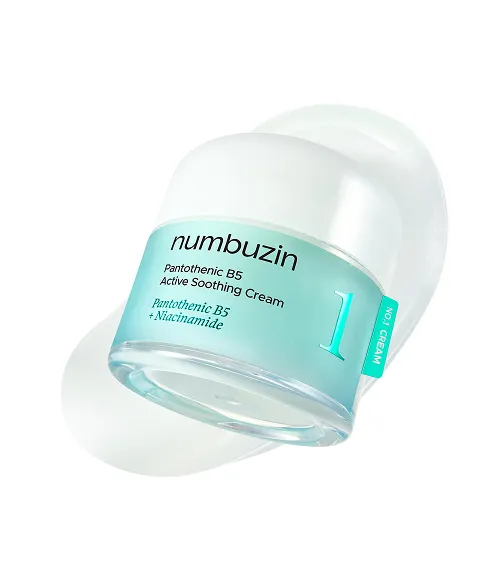
Lightweight gel cream with pantothenic acid, niacinamide, and cica hydrates and calms while balancing oil and moisture. Leaves skin pleasant and supple.
Step 3: Sunscreen
Sunscreens fall into two main categories: mineral (also called physical) and chemical. Both protect your skin from UV damage, but they feel different on the skin. Mineral sunscreen reflects UV rays and is usually gentler, making it ideal for sensitive skin. However, it can leave a white cast and feel thicker. Chemical sunscreen absorbs UV rays and converts them into heat, offering a lighter, more cosmetically elegant texture. The downside is it can sometimes cause stinging or feel sticky. Hybrid formulas combine the benefits of both types.
For combination skin that’s sensitive or breakout-prone, choose a non-comedogenic mineral sunscreen. If your skin is more balanced and not easily irritated, a hydro sunscreen or hybrid sunscreen that mixes mineral and chemical filters works well for everyday wear without feeling heavy or greasy.
Recommended Korean Sunscreens for Combination Skin
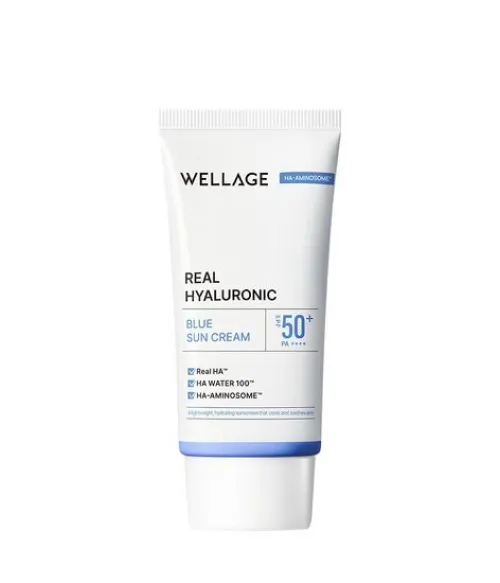
Broad-spectrum sun cream rich in hyaluronic acid delivers moisture with minimal oil. Calming and cooling ampoule-light texture with no white cast.
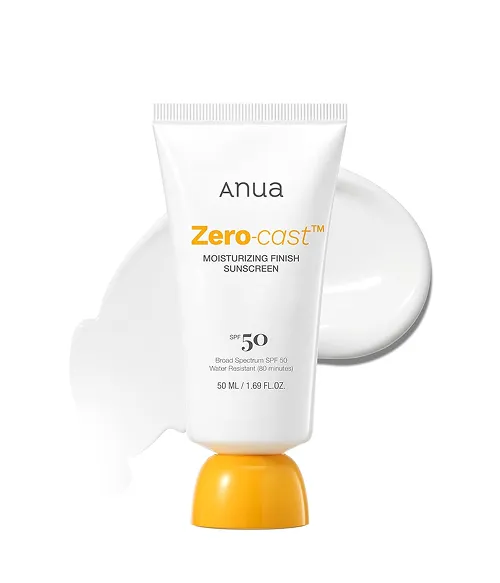
Lightweight broad-spectrum hydro sunscreen with no white cast or pilling under makeup. Hydrates with minimal oil, making it ideal for oily and combination skin.
Night Korean Skincare Routine for Combination Skin
Single Cleansing for Makeup-Free Days
If you haven’t worn sunscreen or makeup, use a mild, low-pH gel or foam cleanser with good cleansing power. Focus on the T-zone, but make sure to massage your entire face to remove buildup and impurities from the day.
If a low-pH cleanser feels too weak on your forehead, nose, or chin, try a gentle, slightly alkaline foam cleanser instead. Some people with oily or combination skin find that cleansing only with low-pH cleansers can actually trigger breakouts. Pay attention to how your skin reacts and adjust accordingly.
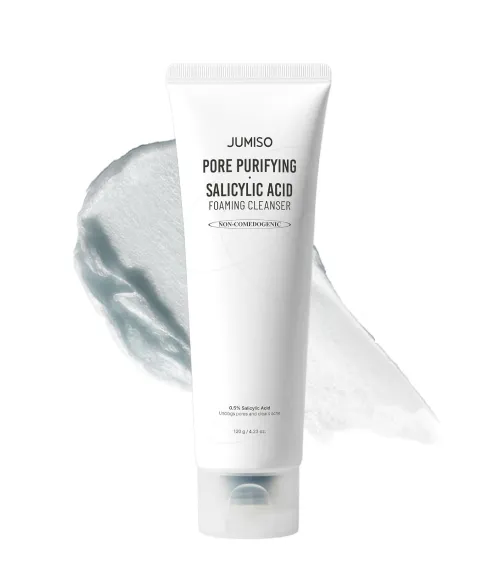
Mildly acidic foam cleanser with blue clay and salicylic acid. Non-comedogenic formula, highly rated by acne-prone combination skin users.
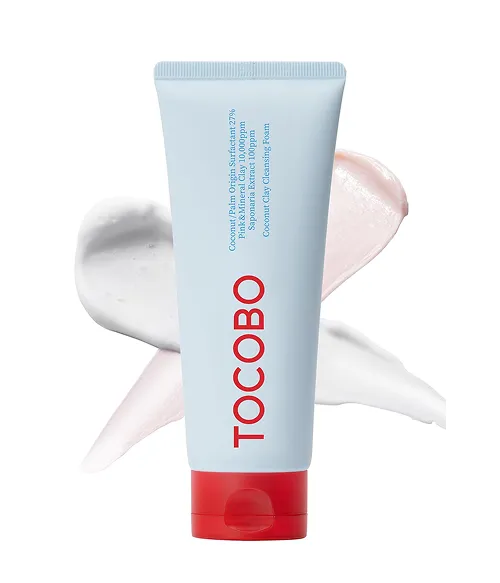
Mildly alkaline foam cleanser with pink and mineral clay gently exfoliates and absorbs oil while maintaining hydration. Leaves skin clean without feeling stripped.
Double Cleansing for Heavy Sunscreen and Makeup Days
When you’ve applied sunscreen heavily or worn makeup, double cleansing is essential. Start with a cleansing oil or balm to break down makeup and SPF. If your skin is sensitive or prone to acne, use a cleansing milk instead. Finish with a low-pH cleanser as your second cleanse. Focus on massaging the cleanser around your T-zone for about 30 seconds, and limit time on drier areas to under 30 seconds to keep things balanced.
Nighttime Moisturizing
Start the same way as your morning routine. After cleansing, apply a hydrating low-pH toner using a cotton pad to gently sweep across your skin. If you have other skin concerns like dark spots, fine lines, or acne scars, this is the time to use a targeted serum or essence. Follow with a soothing gel or lightweight lotion. For dry areas like your cheeks, add a cream containing squalane or ceramides to strengthen the skin barrier overnight.
If your skin is acne-prone and sensitive, choose non-comedogenic, low-irritation products that support your skin barrier. Be careful not to over-moisturize oily zones. Applying too much cream to your T-zone can clog pores and cause small bumps or breakouts by morning.
Skincare Tips for Combination Skin
Hydrating Masks
Even oily or combination skin needs regular hydration. When your skin gets too dry, it actually compensates by producing more sebum. Use a hydrating mask once or twice a week to help regulate oil and moisture levels. You can try multi-masking or apply modeling masks to specific zones based on what your skin needs that day.
Exfoliation
Use a gentle exfoliator once or twice a week on your forehead, nose, and chin to keep pores clear and prevent congestion. Dead skin buildup can block pores and lead to breakouts, especially in oilier areas. Avoid exfoliating dry areas as frequently, or skip them altogether to maintain balance. On exfoliation days, don’t layer on exfoliating toners, retinol, or other actives after cleansing. Instead, apply a hydrating mask or water-based gel, followed by a soothing or recovery cream to calm and support your skin.
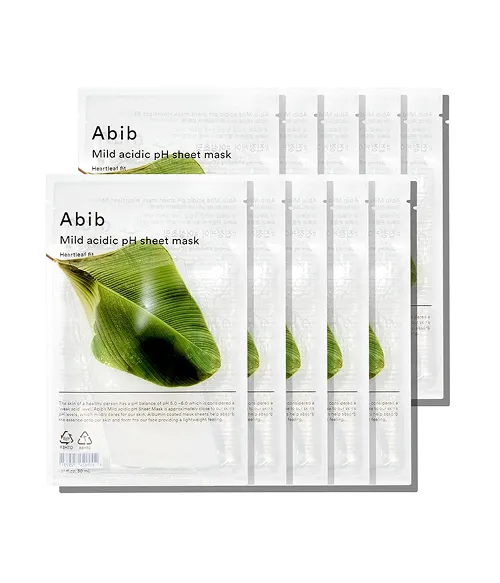
pH-balanced albumin and bamboo sheet mask with cica and active ingredients soothes and deeply hydrates. Packed with approximately 30ml of serum.
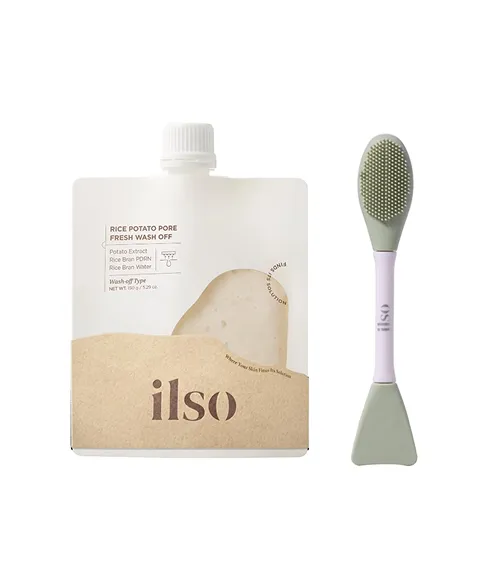
Wash-off pack with potato, rice bran PDRN, and multi grain mix gently exfoliates, controls oil, and moisturizes. Low-irritant, ideal for targeted application.
Other Products That Help with Combination Skin
Oil Blotting Paper & Sebum Control Powder
Oil blotting papers and sebum control powders are staples for oily skin, but they’re just as useful for combination skin. They help absorb excess oil from the forehead, nose, and chin throughout the day, preventing clogged pores and breakouts while keeping your skin looking fresh. For combination skin, paper-type blotting sheets work best. If you’re acne-prone, stick to non-comedogenic sebum control powders that won’t irritate or block pores.
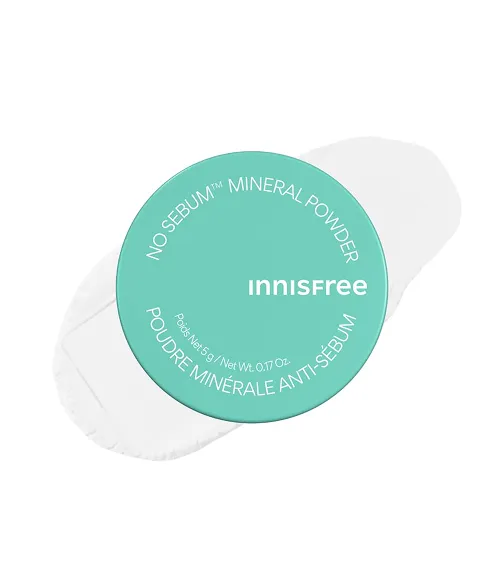
Translucent powder with Jeju minerals absorbs oil, blurs pores, and delivers a matte finish. Includes a puff for touch-ups. Korea’s top-rated sebum control powder.
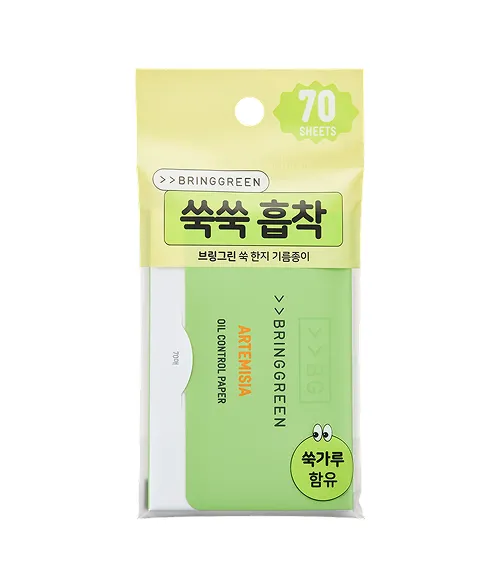
Absorbent Korean hanji paper infused with soothing artemisia powder gently blots excess oil. Perfect for sensitive, breakout-prone skin struggling with sebum.
Multi Balm (Moisture Balm)
A multi balm is a handy product that softens and nourishes dry or rough skin from head to toe. It’s perfect not only for lips but also for delicate areas like around the eyes or mouth that lose moisture easily. They come in stick and tube forms, making them easy to carry and reapply throughout the day. Some Korean actresses with combination skin use this trick to keep wrinkle-prone areas hydrated and smooth without adding shine to oilier zones.
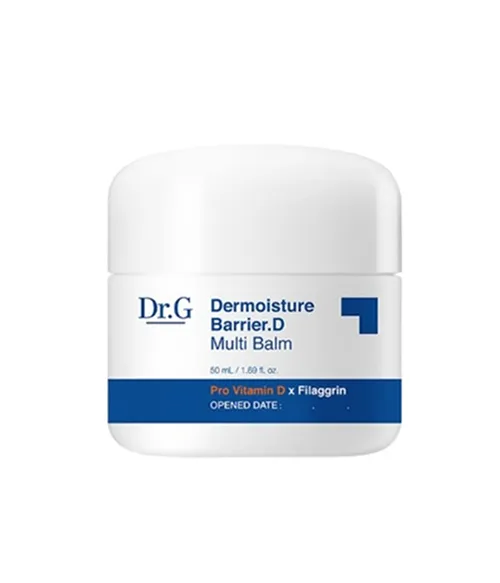
A luxuriously rich balm that melts into skin with a feather-light feel, delivering intense hydration and a radiant, healthy glow with minimal sticky residue.
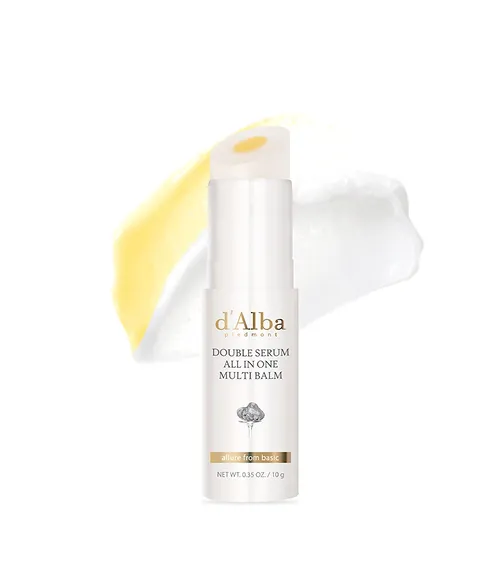
A lightweight balm that melts into skin, hydrating dry areas and locking in moisture with a soft, smooth finish and subtle scent.
Retinoids (Vitamin A)
Retinoids help boost cell turnover, improve fine lines, reduce breakouts, and fade pigmentation. Because combination skin often needs help managing acne and uneven texture in the T-zone, retinoid-based products can be especially effective. Drier areas like the cheeks also benefit from retinoids through enhanced cell renewal and boosted collagen production, which helps maintain firmness and smoothness. However, they can be irritating, so start slowly and build up tolerance.
Acne-focused retinol or retinal creams are often a good fit for combination or oily skin types. Apply only at night, right after cleansing and toner, and always follow with sunscreen during the day since retinoids increase sun sensitivity.
Mistakes Combination Skin Make
Over-Cleansing
Some people with combination skin focus too much on their oily T-zone and end up over-cleansing their entire face. This not only strips moisture from dry areas and weakens the skin barrier in the T-zone but also disrupts your skin’s natural oil-water balance. The result can be increased sensitivity, unexpected breakouts, or inflammation. Your cleansing routine should stay in harmony with your skin as a whole, not be limited to one area.
Ignoring Dehydration
Even if your skin looks oily on the surface, combination skin can be dehydrated underneath. When you neglect this internal dryness, your skin compensates by producing more oil, which can worsen shine, increase flakiness on your cheeks, and trigger breakouts. Keeping your skin hydrated from within is essential to maintaining balance across all zones.
Using Heavy, Pore-Clogging Creams
Thick creams or overly rich oils can block pores and cause breakouts, especially in your T-zone. Opt for lightweight products that hydrate without suffocating your skin. Look for formulas that address internal dryness while staying breathable enough for oilier areas.
Using the Same Product on All Areas
Dry zones need moisture and barrier support, while oily zones need sebum control and lighter textures. Applying the same product everywhere can upset this delicate balance. Skipping area-specific care may feel more convenient, but it often leads to imbalance, congestion, and frustration down the line.
Key Takeaways: Korean Skincare for Combination Skin
Combination skin can be one of the healthiest skin types when balanced properly. The key is treating each zone according to its needs rather than using the same approach everywhere. Layer with lightweight products on your T-zone and richer formulas on dry areas. Your routine should include gentle cleansing focused on oily zones, hydrating toner, targeted serums, appropriate moisturizers adjusted seasonally, and sunscreen. At night, double cleanse when needed and incorporate weekly hydrating masks and gentle exfoliation.
Avoid common mistakes like over-cleansing, ignoring dehydration beneath surface oiliness, using heavy pore-clogging creams, and applying identical products to all areas. Keep oil blotting papers and multi balms handy for midday touch-ups, and consider retinoids for managing breakouts and texture. With this zone-by-zone approach and thoughtful product selection, you can maintain clear, comfortable, and balanced skin year-round.
